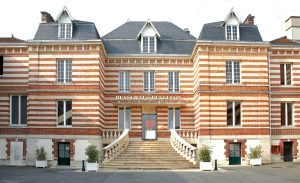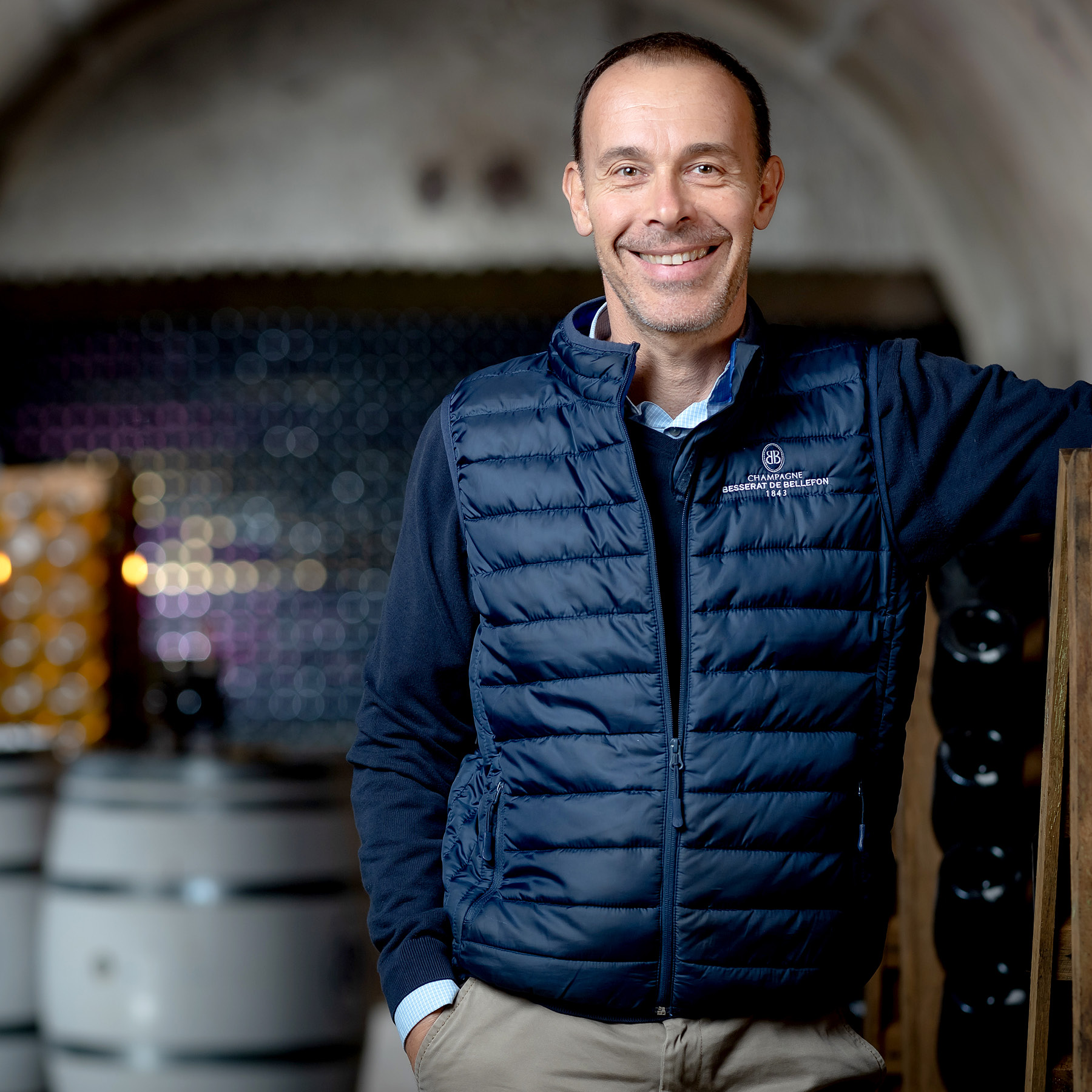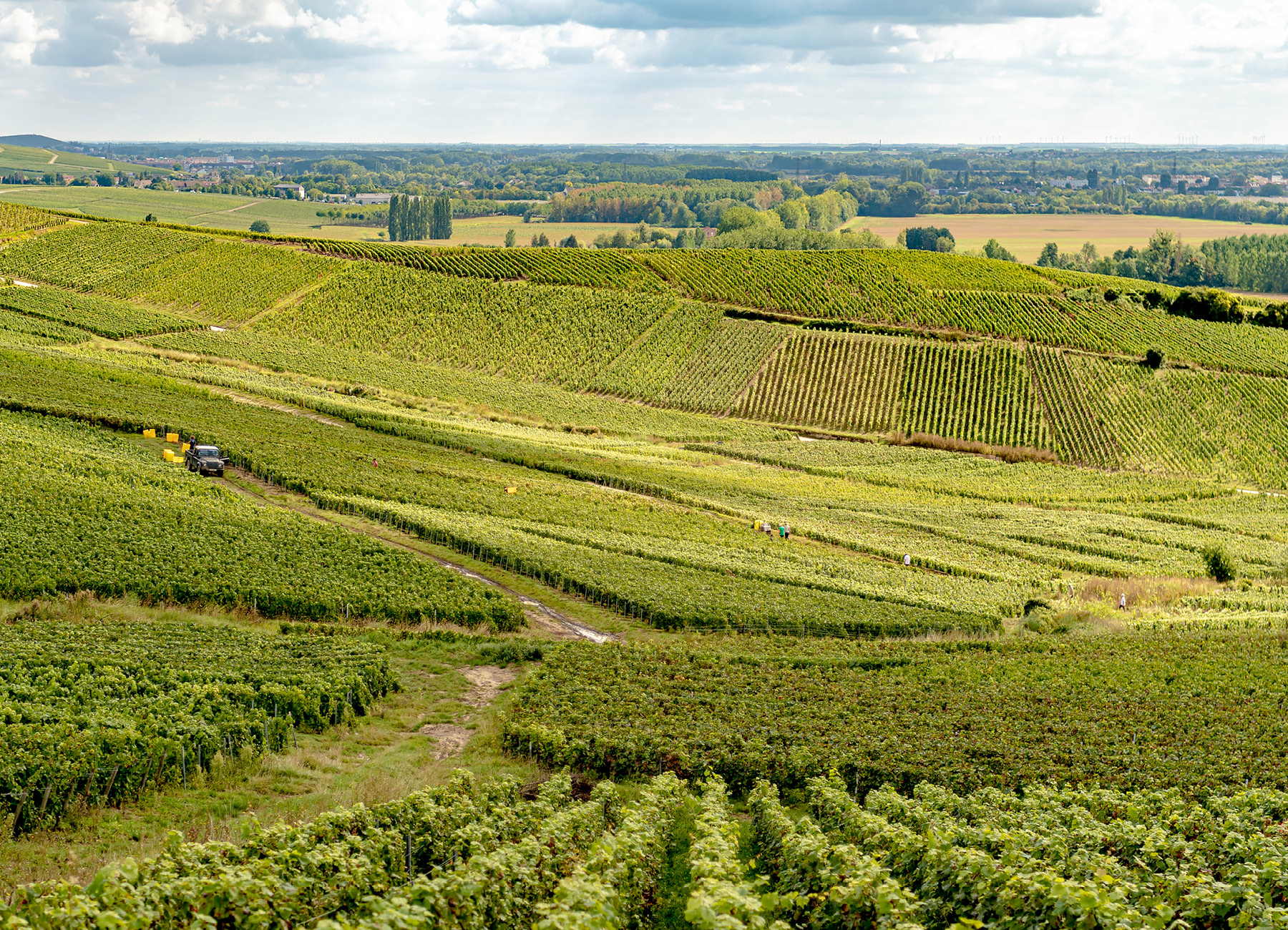Language
You can read the magazine in one of the following languages
Geolocation
You can read the global content or the content from your region


The sound of the cork popping out of the bottle. The fizz of excited bubbles cascading into delicate flutes and the clink of glasses. Nothing says celebration quite like Champagne. Yet, what if you could have all the theater of Champagne but harness its effervescence to create a vin de gastronomie (food-friendly wine) as well?
That was the challenge thrown down by a certain Monsieur Degas to Victor Besserat in Paris in 1930. Degas was the director of the restaurant at Samaritaine de Luxe, the sumptuous art-deco department store that stands tall in the French capital. Besserat represented the third generation of winemakers at Champagne Besserat de Bellefon in Aÿ-Champagne.
“Degas wanted a Champagne that was sufficiently elegant and creamy so that it could accompany any meal,” Cellar Master Cédric Thiébault tells The CEO Magazine. He promised to order 1,000 bottles instead of 100 if Besserat could crack this food and wine matching code.
Besserat had an idea. If he used less liqueur de tirage – a technique of adding sugar to the base wine to trigger a second fermentation in the bottle that gives sparkling wines their bubbles – perhaps there would be less pressure in the bottle.

“This lower pressure gave bubbles that are finer and creamier,” Thiébault explains. Besserat’s Cuvée des Moines was born.
Today, the house continues to use this technique to produce a Champagne with bubbles that are 30 percent smaller than the traditional style.
“Of course, you can enjoy our wines as an aperitif or to party with, but it’s true that there is this added advantage of not being overwhelmed by the effervescence while eating,” he says.
And while other houses may employ a similar practice on certain cuvees, Besserat de Bellefon is, to his knowledge, “the only to employ it across the entire range”.
For the small, family-run Champagne house founded in 1843, the Samaritaine success marked a turning point. Soon, ‘BB’ – as Besserat de Bellefon became known – was the Champagne to pour after dark at the Moulin Rouge and Crazy Horse. Air France served it high in the sky on Concorde flights. In 1989, when French President François Mitterrand hosted German Chancellor Helmut Kohl, they drank BB.
For Thiébault, who joined the house in 1999 and became Cellar Master in 2006, remaining faithful to this rich tradition is paramount.
“We’ve never wanted to change the style of our Champagnes,” he reveals.

As such, the house has never followed the trend of malolactic fermentation, or the conversion of tart malic acids into softer lactic acids winemakers often undertake to stabilize their wines. It’s a technique that imparts some of the bready, brioche flavors Champagne is famous for. By not doing so, the Besserat de Bellefon house-style preserves a natural freshness and fruity elegance.
And, as it celebrates the 180th anniversary of its founding, it’s a choice that Thiébault remains very proud of, especially today.
“With climate change, there’s a tendency for less acidity and more alcohol in our Champagnes. So having this natural acidity is very important to create a balance,” he says.
Thiébault sources grapes from more than 50 crus (high-quality vineyards), many Premier and Grand crus, for four different cuvées: Ligne Simplicité, Ligne Élégance, Ligne Liberté and 5ème Élément.
The house sells 700,000 bottles a year, and unlike many other names in Champagne, 60 percent of its sales are within France. Key export markets, however, include the United States, Australia, the United Kingdom, Belgium, the Netherlands and Japan.
The current release is the 2008 Cuvée Élégance, a blend of 69 percent Chardonnay, 21 percent Pinot Noir and 10 percent Pinot Meunier that spends 12 years on yeast lees.
Thiébault has described it as an “expressive and powerful Champagne, which unfurls beautiful spicy notes and aromas of cooked fruit”.
“It is a vintage which has a strong tension and a strong freshness but which is also very powerful on the palate,” he says.
For this vintage in particular, he sees dishes with creamy mushroom sauces as a perfect food and wine pairing.
“I also think that a lovely Pata Negra, not older than 36 months, would pair very well,” he says.

And, while it is ready to be enjoyed now, Thiébault also recommends saving some bottles in the cellar.
“There’s an enormous aging potential for our non-malolactic wines,” he says.
As it celebrates a milestone birthday, this openness to doing things a little differently still remains a core characteristic at Besserat de Bellefon. A few years ago, the house reached out to another French icon who shares the same initials: Brigitte Bardot.
“We asked if she would be interested in a partnership, to create a cuvee together,” he says. The star came back with an unexpected answer: Yes. In 2018, the first bottling of Cuvée Brigitte Bardot, clad in gold, was released.
Alongside its embodiment of the French art de vie, the house is also implementing organic and biodynamic practices in the vineyard. Its cuvee Triple B is made from biodynamic vines without added sulfites. While, across the whole of the Champagne appellation, such designations represent just five percent of overall output, Thiébault says progress is being made as a sector.
“We won’t be 100 percent organic in 2030, that’s for sure,” he says. “But give us another 10 or 20 years and I think we can get there.”